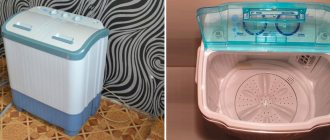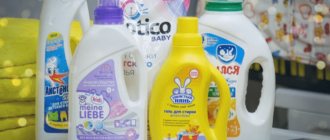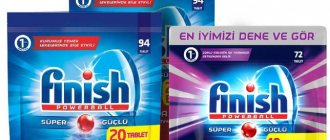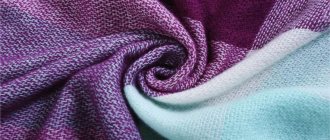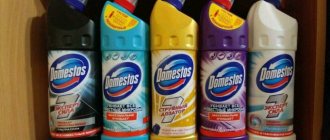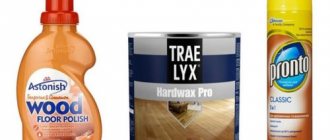For those who write a lot or work with documents, it is often very important that there are no marks on the paper. Therefore, proofreaders have now become one of the most popular stationery products. This is a device for covering up mistakes. When using it, your notebook or document will look clean, without marks. There are several different types of correctors. Their choice may depend on the purpose of use. One of the most popular is the corrector pen. It is easy to put in a pencil case or bag and carry with you.
Stationery putty
Putty or proofreader is a tool used in office work to correct errors in written or printed paper text. After drying, it looks like a white stripe that completely covers the mistake made. The product was born in 1956 thanks to the American Bette Nesmith, who a few years later formed a company called Liquid Paper, which means “liquid paper”. Initially, the gadget was an ordinary watercolor-tempera, which was used to cover up blemishes with a brush. Subsequently, the composition of the corrector was improved many times.
Putties differ from each other both in the method of applying the correction layer, the type, and its composition.
By type of putty there are:
- Liquid. Inside the container with liquid corrector there are often balls that help to better agitate the solution. They are also found in the form of handles.
- Dry. Offers appeared on the market relatively recently and are a tape housed in a plastic case, onto which a layer of dry corrector is applied.
How to choose putty for wooden windows?
Window putty is used to waterproof joints, securely fasten glass, and hide minor defects. The product is a paste made from various components. Sold ready-made or dry. You can also prepare the putty yourself by choosing one of the existing recipes. When choosing a sealing composition, you need to pay attention to the following properties:
- moisture resistance for operation in any weather;
- plasticity for filling the smallest gaps;
- water resistance;
- resistance to temperature changes and sunlight;
- lifetime;
- fast hardening to hold glass;
- absence of harmful impurities in the composition;
- good adhesion.
When planning to carry out work on sealing wooden windows in the cold season, pay attention to the temperature indicated on the packaging.
Choose a sealant that can work down to -200 C. A silicone compound is best for fungus and mold, but when it dries, such putty will shrink a lot.
Types of liquid putties
Liquid correctors are produced in the form of small bubbles or cans, which differ in the methods of applying the composition. It could be:
- brush;
- spatula;
- foam applicator.
The main components of any correction fluid are PVC, calcium carbonate, purified gasoline, titanium dioxide, but they all differ in the base, which can be:
- One. Non-flammable, not dangerous to use, odorless, freezes at low temperatures, and takes a relatively long time to dry.
- Alcohol. It dries quickly, does not freeze in winter, is flammable, and has a pungent odor.
- Emulsion. Dries quickly, has no odor, is resistant to low temperatures, and is not flammable.
When the composition dries inside the container, it is revived by adding a few drops of water and zinc white (gouache). If the corrector is not at hand, you can make it from PVA glue and zinc white (gouache). Mix dried gouache and PVA in equal quantities to form a thick sour cream and apply to the area that needs masking.
How to prepare putty for windows, the best recipes for homemade sealants
For those who don’t want to bother with preparing window putty at home, there are ready-made products that can be purchased at any hardware or hardware store. These include:
- "Gamma" is a Russian manufacturer of inexpensive putty, which can be worked with within the temperature range of -50–+400C. The paste sets quickly and does not crack after drying;
- “Dobra” is a product based on vegetable oils, plasticizers and fillers. It has such characteristics as resistance to precipitation, moisture does not shrink and is non-toxic;
- Leinölkitt is a paste based on linseed oil. Designed for wooden windows.
Leinölkitt window putty
If you want to save money on sealing compound, you can use homemade recipes. There is nothing difficult about making window putty with your own hands. The main thing is to choose a recipe that suits the specifics of the window design, as well as your individual parameters. There are compositions that are relatively easy to prepare, but will not last long. The latter will require a little work, but after completion of the work, you can be sure that the window structure will not need repair for a long time.
Recipe No. 1: using linseed oil
A high-quality mixture that is used both for domestic purposes and by craftsmen. The putty contains chalk and linseed oil. The paste seals any cracks well, is easy to use and will last at least a year. The components for the product are sold in hardware stores. You can take chalk in pieces or powder. The second option is preferable.
- Chalk (if in pieces) is crushed using a grater or wrapped in cloth and broken with a hammer.
- Flaxseed oil is added to crushed chalk in a 4:1 ratio. On average, 10 tbsp is taken per serving. l. chalk and 2.5 tbsp. l oil.
- The mass is thoroughly mixed to a dough-like state.
The readiness of the mixture is checked by rolling a ball. If it holds its shape, the putty is ready; if it blurs, you need to add more chalk. The paste in this recipe turns out to be yellowish. You can make it white using purified linseed oil or by adding dye when you crush the chalk. If you don’t have linseed oil, you can replace it with drying oil, but be prepared for an unpleasant odor.
There is another recipe based on the same ingredients. Half a glass of flaxseed oil is brought to a boil. Pour 0.5 cups of cold oil into the container and add hot oil to it. Pour crushed chalk or limestone into the liquid and mix everything well. The paste can also be colored by adding dyes. It is recommended to use the putty immediately or store it in a tightly closed container.
Recipe No. 2: tar and ash
Window putty based on ash and tar has been tested for years and has proven itself to be a strong and durable material.
- The tar is placed in a metal container, placed on the stove and simmered over low heat for 2 hours. After this it is cooled.
- Wood ash is sifted several times and ground to a powder.
- Both components are combined and mixed well.
- The consistency should be dense, and the mass should not stick to your hands.
To make putty for windows you will need tar
. Tar putty is black in color, so it is not suitable for sealing white windows. But in utility rooms, a garage, a barn or on dark frames it will be indispensable. The paste penetrates well into all crevices and is resistant to moisture and sun. The ash present in the composition has a beneficial effect on wood, protecting it from destruction. You need to start covering immediately after preparing the composition, because... it hardens very quickly.
Recipe No. 3: with sand and flour
For the recipe, you need to take river sand of the finest fraction. The cost of such putty is minimal, and the necessary ingredients are always on hand. The paste is used if urgent repairs are needed and nothing else is available. Unlike previous products, the putty is not as flexible and durable.
- The sand is sifted, washed and dried.
- In a 1:1 ratio, flour and sand are combined and mixed until a homogeneous mass is formed.
- Gradually add water and mix. The consistency should be pasty.
It is better to use this composition indoors, then it will last for several years. On the outside, a more plastic material is used.
Recipe No. 4: vegetable oil and talc
Window putty with vegetable oil is an excellent option to make its use waste-free. It is necessary to use the sediment formed at the bottom of the bottle with unrefined vegetable fat.
- Carefully separate the sediment from the clear oil.
- Talc is gradually poured into the liquid in a 1:1 ratio until the consistency required for work is obtained.
- After receiving the composition, use it immediately.
If talc is not available, it can be replaced with decorative cement, putty or sand. This paste turns out to be plastic and is well distributed over the surface of the frame.
Recipe No. 5: multi-component putty based on white lead
Pasta according to this recipe requires a little more effort and time to prepare, but the result will exceed all expectations. The putty works well, and windows with it will last at least 3 years. To prepare you will need:
- lead white - 10 parts;
- chalk powder - 5 parts;
- linseed oil - 7 parts;
- beeswax - 3 parts;
- ocher or umber - 3 parts.
To make your own putty, you will need honey powder.
Melt the wax in a water bath. Without removing it from the heat, pour in the linseed oil and stir. Cool the composition and add chalk and ocher and mix. Add lead white and give the composition a uniform consistency. Transfer the paste to a suitable container for storage and cover. This putty is suitable for treating several wooden windows. Store the container with the composition in a cool, dark place.
Corrector pen
If many mistakes are made, then to correct and disguise mistakes, use a stroke - putty, a corrector with a brush, with the help of which they cover the written layer with a width of 3-4 mm. To correct spot marks, a corrector pen is more suitable, with the help of which a layer 1 mm wide is masked, which, in turn, is inconvenient to use for correcting large errors.
What does it consist of?
The pen is a bottle that holds up to 30 ml of correction fluid, with a tiny metal ball inside for stirring the mixture. There is also a microvalve inside that regulates the supply of composition to the writing element. The pen works in the same way as a regular ballpoint pen: when you press on the paper, the roller bearing rotates and allows the masking fluid to get into the place of the mistake through a hole in the metal tip.
Rules for working with a corrector pen
Just before editing the text:
- shake the handle several times to mix the liquid;
- remove the protective cap and lightly squeeze the container with the composition;
- then they paint over the slips and blunders, as if they were sketching with an ordinary pen or pencil.
To avoid rapid drying of the correction composition, do not leave the handle open.
If the composition does not appear on paper, then the following has happened:
- Drying of the composition on the ball assembly. In this case, resuscitation measures are taken. They press the ball mechanism inward a little with a needle, trying to turn it around, shake it a little with the corrector and try to paint the pen with pressure.
- If actions with the ball mechanism did not help, the reason is that the composition has dried out in the tank. If the base is aqueous, add a few drops of tap water; if it is alcoholic, add a little liquid containing alcohol. To carry out this procedure, disassemble the pen and pour a little diluent into the ball assembly.
Types of face correctors
Choose the appropriate proofreader format depending on the task you face.
Liquid corrector
© Makeup.ru
The most popular format: liquid correctors are loved primarily because they are easy to use.
- As a rule, the kit includes a convenient applicator, like a lip gloss, with which it is easy to apply the corrector both to spots and to larger areas.
- Many of the liquid concealers can be used around the eyes to hide dark circles under the eyes. However, make sure that the corrector is not too dense in texture and does not get caught in small folds of the skin. If dark circles are too noticeable, apply the product in layers: first spread the corrector in a translucent layer and blend well. Allow the product to absorb and apply a second coat.
© maybelline - Liquid correctors are produced in different colors, from pink to green: these are intended for color correction of the skin.
- Sometimes you can see the inscription “reflective corrector” on the packaging; they are used in the area around the eyes to hide small swellings, or used instead of a highlighter.
Corrector stick
© Makeup.ru
The second most popular format of concealer, which is very convenient to take with you: it definitely won’t smear in your bag, and you can use it to disguise an inopportune pimple even in a taxi on the way to a party. This product has a creamy texture, so it spreads quickly and easily over the skin and is perfect for girls with dry skin.
© maybelline
To hide a pimple or a small scar, proceed according to the following scheme: precisely apply the product to the problem area, wait until it “settles” on the skin a little (20-30 seconds), and then blend the edges with your fingers or a sponge. Apply a little powder on top to seal the result.
Pencil corrector
© Makeup.ru
The corrector pencil has a high density and dry texture; antibacterial components are often added to its composition, so this product is ideal for girls with oily and problem skin. In addition, this concealer has the highest staying power. In addition to its main function, such a pencil also takes on several others.
© lancome
- Using a corrector pencil, you can visually enlarge your lips: apply a nude pencil, slightly extending beyond their contour. If, on the contrary, you want to make your lips a little smaller, outline them strictly along the contour.
© Makeup.ru
- The pencil can be used instead of a primer for the eyes or lips: shade the entire surface of the lips with corrector, and apply bright lipstick on top - the shade will be more saturated and the lipstick will last longer. Do the same if you use bright shadows.
© Makeup.ru
- You can use a corrector pencil to highlight the area under the eyebrow to visually lift it.
© Makeup.ru
- Line the mucous membrane of your eyes with a pencil to make your eyes look more wide-open.
© Makeup.ru
Cream corrector
© armanibeauty.ru
Concealer has a creamy consistency and is usually sold in small jars or palettes of four to six colors: they are useful if you need to solve several different skin problems. In general, cream correctors are universal (they are even used to correct the shape of the face), they have a fairly dense consistency and high covering power, so they can be used to disguise scars and dark spots.
© lorealmakeup
Cream correctors can be applied to different areas of the face with a brush, sponge or even your fingers. Best suited for normal to dry skin, may be too rich for oily skin.
Foundation corrector
©Getty
On occasion, it can replace foundation, as it has a similar consistency. Choose a shade according to the same rules that you follow when choosing a foundation: it should perfectly match your skin tone.
© lorealmakeup
Dry corrector
© nyxcosmetic.ru
Not the most common concealer format, which, however, is ideal for oily skin, as it has a mattifying effect. Use to correct redness or age spots: in the first case, a corrector with green pigments, in the second, with purple pigments. Apply regular powder to match your skin tone on top.
© lorealmakeup
If you can't decide on the type of corrector, take our test.
Take the test
Return to contents
Tape correctors
They are a tape with a dry corrector applied, enclosed in a roller.
The advantage is the ability to immediately write on the correction tape and the impossibility, if used correctly, to visually and organoleptically determine its presence on the sheet, and the disadvantages include breaks in the tape if the corrector is handled carelessly. The tape width is 4-6 mm, at which it is impossible to mask point errors. Russian users can purchase these products, manufactured in our market by Attache. Its advantages include the ability to change the module with the tape. Before use:
- remove the cap;
- set the roller to the beginning of the text being corrected;
- Without letting go of the gadget, draw a continuous line of the required length.
How to apply concealer to the face: step-by-step diagrams
Concealer can be used for different purposes, and the techniques for applying it certainly vary. We'll tell you about the basic techniques that will help you use face corrector.
© lorealmakeup
Corrector for the skin around the eyes
There are several techniques for applying concealer under the eyes. You can use the corrector to draw thin lines diverging from the inner corner of the eye, or put several dots under the lower eyelid.
© Makeup.ru
© Makeup.ru
But you should always adhere to one method of shading the applied product: correctly shade the corrector in the shape of an inverted triangle, and not stretching it towards the inner corners of the eyes. Please note that the corrector should be either skin tone or slightly lighter.
© Makeup.ru
Our video tutorial clearly shows how to apply concealer correctly.
How to cover up bruises and dark circles under the eyes?
By following these simple rules, you can mask dark circles under your eyes on your own.
© lorealmakeup
- If the dark circles under the eyes are too noticeable, use a yellow, orange or pinkish shade of corrector, apply a corrector on top of a tone lighter than your skin, or immediately treat the area with foundation.
- To hide dark circles, also use a color corrector. If you have fair skin, use pink, medium skin tones will suit peach, dark skin tones will suit orange.
- Apply color corrector in the same way as a regular nude or concealer.
How to hide wrinkles with a concealer?
The corrector is also indispensable if you want to disguise fine wrinkles. There are three basic rules of use.
© lorealmakeup
1
When creating age-related makeup, first use a moisturizer and let it absorb properly.
2
Then apply a concealer 1-2 shades lighter than your skin color under your eyes to hide dark circles and crow's feet in this area (remember the inverted triangle rule!). Choose a water-based liquid concealer that won't settle into creases: after using it, your skin will look more even.
3
Apply the same corrector to the bridge of the nose, to the “tick” above the upper lip, to the corners of the mouth below, to the dimple above the chin. Blend thoroughly with a damp sponge before the product has time to be absorbed.
© Makeup.ru
Apply the corrector with a thin brush (or a thin applicator, for example, like Giorgio Armani High Precision Retouch) directly inside the wrinkle, on the area where the shadow falls. Lightening this area will visually smooth out the wrinkle.
How to hide a pimple with concealer?
To disguise acne, it is better to use color correctors; they better neutralize redness.
© lorealmakeup
1
Use a brush to apply cool-toned green concealer directly to the pimple or redness.
2
Lightly press the pigment with your finger and blend its borders. Wait a minute for the corrector to “settle” on the skin.
3
Apply a foundation that suits your skin tone all over your face.
© Makeup.ru
Return to contents
Reviews
Olesya U, Kaliningrad
“I appreciated the corrector pen, despite its rather high (150 rubles) price. It is impossible to remove a small blot with a stroke, it turns out to be a white spot, but with a pen I put a dot, and everything is in order. Although I also use strokes, sometimes I need to make corrections in documents and calculations.”
Olga S, Yaroslavl
“I work as a laboratory assistant at a factory. I use the proofreader all the time to correct incorrect calculations and entries. I don’t give preference to any one company; I think the disadvantage is that the correctors quickly thicken and, when used, leave unsightly, uneven spots that are inconvenient to write on.”
The whole truth about the proofreader
“Stroke, putty, proofreader” - all these definitions are known today to every schoolchild, office worker, and in general to everyone who deals with paper media. The first correctors saw the light quite a long time ago - in the 50s of the twentieth century, but the palm of the discovery of this invention is still disputed between the Americans and the Japanese. Over its more than 50-year history, the line corrector has undergone significant changes; several varieties of stationery “putty” have appeared, each of which has its own advantages and disadvantages. We will talk about the types of correctors in our article.
Barcode corrector: composition
Strange as it may sound, the composition of the corrector is, so to speak, the proprietary secret of each specific manufacturer. Of course, there are certain chemical components that are necessarily present in one proportion or another in the corrective composition: calcium carbonate, titanium dioxide, highly purified gasoline, etc. But it is unlikely that ordinary people will be able to fully determine the composition of a stroke, and this, in general, is not necessary, since the more important parameter of a corrector is its base, and the manufacturers do not hide it. There are three types of correctors depending on their base:
- Water-based composition;
- Alcohol-based touch-up corrector;
- Emulsion (oil) putty.
Each of the above types of office barcode corrector has its own characteristics:
- Water corrector is an environmentally friendly, odorless, non-flammable substance that covers all types of paper well. The disadvantages of this touch are that it takes a long time to dry (from 30 seconds to one minute) and does not tolerate low temperatures (meaning storage).
- Alcohol-based correction fluid is considered more effective because it dries almost instantly and is frost-resistant. However, like any alcohol-containing substance, it is flammable and also has a pungent, not very pleasant odor.
- Oil corrector - a composition that combines the advantages of water and alcohol touches - is rare in our latitudes; in order to find and purchase emulsion putty, you will have to go to many office supply stores.
Alcohol-based concealers dry almost instantly
Cooking at home
Previously, you didn’t buy window putty, but made it yourself. You can do the same thing now. The process is not complicated and will save money. But at the same time, there is one feature: it should turn out to be plastic and quick-drying. Stay on treated surfaces and serve for at least 12 months.
Homemade sealant must meet the following requirements:
- Excellent adhesive properties. Grip on any surface it will be used on.
- High plasticity, stretchability. At the same time, it should not crack or tear with slight stretching.
- Fast hardening. After complete drying, no cracks or bubbles should be found on the surface.
- Not critical indicators of response to temperature fluctuations and high humidity.
- Service life is at least 12 months.
Based on these indicators, choose what the sealing composition will consist of.
How to make putty and what components to use will be described in detail in each recipe below. All that remains is to be put into practice.
From chalk and linseed oil
This is one of the most popular compositions for wooden structures. Professional glaziers resort to it, as it consists of two components.
The manufacturing sequence consists of the following aspects:
- Grind the chalk to flour and mix with linseed oil in a ratio of 4:1.
- Knead the dough". If you can roll it into a ball, it's a good consistency to work with. Otherwise, add more chalk powder.
- If desired, add dye. White is required, leave everything as is.
If you don’t have linseed oil on hand, replace it with drying oil, but then the mixture will have a certain smell.
Disadvantage: based on chalk and drying oil, it begins to crack under strong temperature fluctuations. This is the essence of fragility.
Made from fine sand and flour
Often a situation arises in which there is a need to seal from the inside, but there is nothing at hand except flour and sand.
Mix the indicated ingredients from the recipe name in equal proportions. Add a small amount of water or PVA glue. The result should be a viscous mass that can hold its shape.
Attention! This composition is recommended for use only in emergency cases, because it is not strong, durable or elastic enough. And as soon as the opportunity arises, be sure to replace it with a high-quality sealing layer.
From melted lard and rosin
Its peculiarity is that it can be prepared for future use and stored in the refrigerator.
So what you need to do:
- Melt lard in a hot frying pan. From the amount received, take only 1 teaspoon;
- turn rosin into powder, you will need 1 tbsp. spoon;
- mix the previously prepared ingredients with 10 tsp. chalk powder.
You will get a thick mass. Transfer the excess into a tightly sealed container and store in a cool place. Use as needed.
From tar and ash
Boil the tar over moderate heat for a couple of hours and cool. Add sifted ash to it. Stir until the mixture is no longer sticky. The resulting composition is used immediately; it cannot be stored, it loses its properties.
This homemade mixture is strong and durable.
From vegetable oil and talc
From the remains of liquid, vegetable fats, a water-repellent material is prepared for sealing glass.
Separate the resulting precipitate from unrefined sunflower oil. Add talc to it until the required consistency is achieved. It can be replaced with ordinary or decorative cement composition. Then you will have to cook quickly, as well as spend it.
Other building materials can also be used: sand, putty, cement, etc.
Multicomponent
This is the best recipe, after which, after using it, the windows will last for at least three years, retaining heat inside the house and without losing their tightness. Differs from other compositions in complexity.
Components and their ratio:
- Lead white: 11 parts;
- Crushed chalk: 6 parts;
- Flaxseed oil: 8 parts;
- Beeswax: 4 parts;
- Ocher or umber (powder): 4 parts.
First you need to decide on the volume. It is calculated based on the size and number of windows. Take a measuring cup and a container for mixing the putty composition.
Recipe
Melt the wax and, without removing from the heat, add oil. Remove the dishes from the stove and cool the mixture to room temperature. After this, add ocher, pre-mix with chalk powder, stir until smooth. Pour in whitewash, shake with a spoon (or other utensil) and begin sealing.
If there is a lot of unused mixture left, do not rush to get rid of it. It can be stored in the refrigerator or other cool place, after transferring it to a plastic bag or tightly sealed container.
Dry and liquid correctors
Office proofreaders can be liquid or dry. The first includes a liquid stroke and a correction pencil, the second - a tape-type corrector.
- Correction fluids are produced in small bottles with a brush, applicator, and sponge applicator built into the cap. This corrector is quite simple and easy to use: just shake the bottle, dip a brush in the liquid and paint over the area that requires correction in one motion. Nevertheless, correction fluids are still considered a somewhat outdated type of touch, since manufacturers have long launched the production of more convenient and ergonomic forms of putty.
- The corrector pencil is no different in shape from a regular pen, but instead of paste, it is filled with correction fluid, which flows out through a hole in the metal tip (hole diameter - 1 mm). Using a correction pen, you can precisely correct the smallest details of the text, even the “flaws” of individual characters. But “painting over” a large piece of text with such a pencil will not be very convenient; here the advantage clearly remains on the side of the correction fluid in a bottle with a brush (one stroke and a whole line is painted over).
- Corrective roller tape is the latest “fashion” in the world of correctors. This is a dry composition contained in a convenient and ergonomic roller. Using a tape corrector, you can correct the required section of text in a matter of seconds: the tape applied to the paper (if, of course, the corrector is of high quality and is used correctly) will be practically invisible not only by sight, but also by touch. Correction tape is not without its drawbacks: with its help it is impossible to precisely correct minor flaws in symbols; The width of the tape is standard (4-6 mm), that is, to correct small font with small line spacing, you can go beyond the edge of the line.
When purchasing a tape corrector, give preference to models with a transparent case, which will allow you to control tape consumption
Advantages and disadvantages of homemade window seals
Homemade putty is cheaper than store-bought sealants. Most of the components are found around the house or sold in stores for pennies. Also, the composition of the paste is selected individually, based on the operating conditions of the window, the type of frame and its condition. Do-it-yourself window putty also has disadvantages. This is the fragility of some compounds. You should only work with homemade sealants in warm, windless weather. This is not entirely convenient if it is cold outside and repairs need to be carried out urgently. Otherwise, such mixtures are beneficial, especially for work in the country house or utility room.
Correction pen: how to use?
For those who write a lot or work with documents, it is often very important that there are no marks on the paper. Therefore, proofreaders have now become one of the most popular stationery products. This is a device for covering up mistakes. When using it, your notebook or document will look clean, without marks. There are several different types of correctors. Their choice may depend on the purpose of use. One of the most popular is the corrector pen. It is easy to put in a pencil case or bag and carry with you.
What are proofreaders?
A text proofreader is a device that can be used to easily correct what is written or printed on paper. Such stationery supplies are most in demand by high school students, students, and office workers. The proofreader allows you to accurately correct an error, after which there will be no blemishes left in the document, and the outline will look perfect.
The first corrector was invented in the USA in the middle of the twentieth century. One typist, Bette Nesmith, came up with a white liquid that could be used to cover up mistakes. She became famous for this, and then founded a large stationery company. The correctors were a white liquid that dried quickly after being applied to paper. It hardens into a crust through which the error cannot be seen. On top of this white mark you can write the correct letter or word.
Types of correctors
At first, this stationery was only a liquid that was applied to the mistakes with a brush. Now this variety is also common. Such correctors are sometimes called “stroke”. In addition to a brush, a foam roller can be used to apply the liquid.
And recently, correction pens and correction tape have become increasingly popular. They are more convenient for covering up minor mistakes and are less noticeable on paper. The tape generally belongs to dry correctors, since you don’t need to wait for it to dry, you can write on it right away.
How to use window putty, features and rules of application
Before you start working with fresh putty, you need to get rid of the layer of old material. To do this you will need a thin spatula or a sharp knife. A construction hair dryer will heat up the putty, make it softer and simplify the work of removal. If the dry paste does not give in, there is no need to apply force, as the glass may be damaged. After the old putty is completely removed, the glass is removed and the surface of the frame is well cleaned with sandpaper.
The clean window frame is ready for further processing. Before applying the paste, the wooden surface is impregnated with a deep penetration primer. This is necessary so that the oil component does not penetrate into the wood.
The glass is inserted into the frame and secured around the perimeter with several small nails. A sausage is rolled out of the putty, which is placed at the joint between the glass and the frame. You can also use a knife with a wide blade or a rubber spatula for application. The sealant is applied to the tool. Without lifting it from the surface, the paste is carefully leveled to cover all the cracks. All windows are processed in a similar way. Once the putty is dry, it can be sanded and painted.
Corrector pen: general characteristics
Applying correction fluid to paper with a brush usually leaves a very thick mark. In this way, it is inconvenient to cover up small blots, for example, if one letter or even part of it is written incorrectly. That's why pen proofreaders were invented. They dispense white liquid through a thin metal or plastic tip. Therefore, it is very easy to perform a targeted error correction.
Such devices are a handle, which can be thick or even shaped like a regular one. Its body is made of soft plastic and filled with correction fluid. It gets onto the paper through a fine tip. There are two options for supplying liquid. In the first one, you need to press a little on the tip. Some of it will go inside and open the exit of the liquid. The other option is more convenient - it repeats the principle of operation of a regular ballpoint pen.
Paper putty: varieties
The most popular option is liquid office corrector. Putties of this type are distinguished as follows:
- Stationery with a brush - sold in tubes that look like a bottle of nail polish. It has a small brush that is convenient for applying the composition to paper.
- Corrector pen - resembles a regular pen, only instead of ink there is a special white liquid inside for proofreading. It is fed through a small hole, so using this option is convenient for correcting small blots.
There is also a tape corrector that allows you to correct errors by gluing a thin white tape on top. It is convenient to use when you need to correct an entire line or at least a word. For replacing letters and minor typos, the device is extremely inconvenient.
Types of correction fluids
Both liquid concealers and pens use different liquids. Typically this white mass is low molecular weight polyvinyl chloride. It can be dissolved in various chemicals: trichlorethylene, titanium oxide or barium sulfate. Depending on the base, there are three types of correction fluids.
- Water-based pens are the most popular. This correction fluid is safe, non-flammable, and odorless. Therefore, it is most suitable for schoolchildren. But water-based liquid dries slowly and can soak thin paper. It freezes at low temperatures, but the advantage is that when the tip dries, it can be soaked with water.
- Alcohol-based pens are more in demand among students and office workers. After all, such a liquid dries quickly, making it possible to immediately continue working. In addition, it does not freeze at low temperatures. Its disadvantages include its rapid drying inside the pen if the cap is not tightly closed, a strong unpleasant odor and the risk of fire.
- Recently, oil-based stationery pen correctors have appeared. They combine all the advantages of previous models, but are still rare.
Which one to buy
There is a huge assortment. They are divided into acetate and neutral mixtures. Purpose of the first: increasing the tightness of glass. Second: sealing the seams between the smooth surface and the frame.
Acrylic putty for windows
Silicone window sealant Polyurethane window sealant
List of popular ones:
- Acrylic. It prevents air from penetrating through window joints, which means it perfectly retains heat in the house. When working with it, no special equipment is required. protection. The paint holds firmly on it and hardens quickly. If necessary, you can plaster. But there is one drawback - it is not resistant to humidity and begins to turn yellow over time.
- Polyurethane. Don’t know what sealant to use to seal cracks in plastic windows? Choose him! It is resistant to staining, temperature fluctuations and is practically unaffected by chemicals.
- Butyl. Used for PVC when connecting glass in double-glazed windows. It acts as a barrier to the penetration of water vapor between the glasses.
- Silicone. He is easy to work with. The consistency of the paste penetrates deep into cracks and joints, hardens quickly and creates excellent protection against air. Silicone putty for windows, suitable for outdoor use. You should also be prepared for the shortcomings: it comes off as a strip, just as it was applied, leaving behind an impressive gap. It will not be possible to paint over such sealant.
When choosing, pay attention to the composition of the putty, since each substance has its own advantages and disadvantages.
How to choose the right one
When buying sealant for window frames made of wood or plastic, you must be guided by the following qualities:
- Compatibility with other materials.
- Resist chemicals, temperature fluctuations, ultraviolet radiation.
- Stay not only on the frame, but also on a smooth surface.
- Long service life.
- Elasticity, strength, safety.
In addition, adhere to the following rules:
- Firstly: silicone for window frames cannot be painted over. Therefore, to seal a white plastic window, choose one with the same color. For any other shades - transparent.
- Secondly: if it is difficult to choose or to seal knocks of plastic and wooden structures at low temperatures, you should give preference to universal ones.
- Thirdly: new silicone synthetic pastes shrink after drying.
Important! Silicone protects better from mold and mildew.
Correction pen: how to use?
Such devices are more convenient, they use liquid more economically, and you can cover up minor mistakes. But many people have a question about how to use such a corrector correctly. It can take the form of a regular pen or a thick felt-tip pen. But they have the same operating principle. There is a metal ball inside that helps mix the liquid and prevents it from drying out. To do this, shake the handle vertically before use.
Then place the tip of the corrector against the area that needs to be covered. The simplest models act like a regular ballpoint pen. Others need to be squeezed a little so that the liquid begins to flow to the tip. For this purpose, the body of such handles is made of elastic thin plastic. In some models, you need to press the tip a little so that it is hidden in the body. This opens the path for correction fluid.
Corrector color palettes: how to use
Color correctors are products that help solve several problems: mask redness, dark circles under the eyes, age spots and other minor skin imperfections. To find out which one you need, read our instructions.
© lorealmakeup
Purple corrector
- Lilac tones neutralize yellowness, so a concealer of this color will help to cope with a dull complexion (in this case, apply the corrector to the entire face) and hide small age spots. Be sure to spread foundation on top.
- In addition to the fact that lavender corrector removes yellowness, it also gives the skin radiance.
- If you are severely sunburned, apply a corrective primer with blue pigments to your face. It will help soften the effect a little.
- If you have dark or tanned skin, do not use a cool-toned product: it is unlikely to improve the situation.
© Makeup.ru
Yellow corrector
- Yellow correctors are ideal for neutralizing and brightening purple and blue spots, so use them to correct dark circles under the eyes and fine spider veins.
- They are also suitable for covering dark scars and acne marks.
- If you don't have a yellow concealer on hand, try using a foundation with a yellowish undertone: it can also cope with slight redness.
© Makeup.ru
Pink corrector
- Conceals dark circles under the eyes: hides blue, green and violet colors. Dark circles of these colors are most often found in people with fair and medium skin tones. Therefore, if you notice that small veins around the nose or dark circles under the eyes look greenish, feel free to correct them with a pink corrector.
- If you have pale skin, choose a salmon shade; peach is more suitable for olive or tanned skin.
- On pale skin, a pink concealer will also help hide age spots.
© Makeup.ru
White corrector
White corrector is quite rare. As a rule, they are used to dilute foundations, concealers and correctors of too dark a shade in order to ultimately obtain a suitable color.
© lorealmakeup
Green corrector
Green is the best color to neutralize redness, so this concealer is ideal for covering up pimples, spider veins, and a reddish complexion. To cover up more serious blemishes (like sunburn), mix green concealer with foundation and apply to problem area. If you have a reddish complexion, use a green color correcting primer.
© Makeup.ru
Orange corrector
The most important correction product for dark skin. Orange concealer hides age spots, brownish circles under the eyes and other dark spots. It will also help to slightly lighten the dark nasolabial folds and the area in the corners of the lips, and neutralize dark circles under the eyes.
© Makeup.ru
We clearly showed how to use the color corrector palette in this video.
Return to contents
The most common models
The corrector pen is now one of the most common office supplies. All well-known companies producing such products produce many models. There are several of the most common ones that are popular due to their high quality, ease of use and low price.
- The best correction pen is Erich Krause. Many users trust this company. Reviews note that this corrector has virtually no drawbacks. It is odorless, beautifully shaped, and easy to use. The metal tip does not scratch the paper and allows you to apply correction fluid precisely. This correction pen is also called arctic white because of its snow-white color.
- Correctors from BRAUBERG are also popular. They are distinguished by a stylish design, a comfortable tip and a soft body that allows you to easily squeeze out the correction fluid. And the metal ball inside prevents it from freezing.
- Many users choose inexpensive correctors. These include products. Despite their low cost, they are of high quality, odorless, and the liquid dries quickly.
You can choose any corrector pen. If you know how to use them, then no mistakes in the text will be scary. They can be easily covered up with a high-quality corrector.
Proofreading vs. Proofreading – Which Type of Stationery Proofreading is Best for School?
Corrections and blots in notebooks and diaries are common to every schoolchild. Some have more, some have less, but no one is perfect. Just a couple of decades ago, “dirt” in notebooks was a serious problem. They fought it with the most severe methods - they tore out sheets of paper, started new notebooks, and first wrote in a draft. And the teachers took grades for inaccurately completed assignments. With the advent of corrective materials, this problem was reduced to a minimum. The corrector will allow you to accurately correct any mistake.
In the first years of its appearance on the market, the choice of correctors was minimal. Today, their range has expanded significantly. Therefore, in this article we will tell you how a stroke differs from a correction pen, what a correction tape is and which of these options to prefer in a particular case.
Stroke or corrector? What to choose?
The stroke is a bottle of correction fluid. Most often it is equipped with a brush, which is dipped in this liquid and the error on paper is corrected. Instead of a brush, a foam applicator or spatula can also be used. Inside the bottle there are special metal balls that provide the ability to shake the liquid and protect it from drying out.
A stroke is preferable in cases where it is necessary to edit a large section of text. Small fragments can also be covered with it, but if we are talking about literally one symbol, it will be difficult to do this accurately with a wide brush.
The corrector pen is similar to a standard pen, but slightly thicker. It has a fine metal tip and is optimal for spot corrections on all types of paper, including fax paper. The pen body also contains metal balls that perform the same function - protecting the liquid from drying out. The width of the pen mark is about 1 millimeter. Accordingly, such a handle is inconvenient for large areas - the correction process will take a long time.
Accordingly, if you often have to edit large areas, choose a stroke, and if we are talking about erasing one or more characters, buy in our online store kanc-magazin.ru.
There is one more type of corrective material that we would like to tell you about and which is presented in our assortment. We are talking about correction tape. This is the newest format that appeared after its brothers.
The main advantage and difference of a tape corrector is the dry consistency of the correcting substance. Accordingly, you do not need to wait for the liquid to dry and you can immediately make a new recording on the corrected area. The correction layer is applied to the surface of the paper in an even layer. Its standard width is 5 millimeters, and the length of the tape is 6 meters. The disadvantage of this device is the inability to make a spot correction, the size of which is less than the width of the tape. It is also worth noting that the correction tape remains invisible during photocopying and can be used on any type of paper.
How is corrector different from concealer?
© Makeup.ru
Corrector and concealer are tonal products that are often confused with each other. And there are several reasons for this: firstly, they actually partially duplicate each other’s functions. Secondly, some cosmetics manufacturers do not distinguish between these categories, releasing one product to disguise all minor skin imperfections - and call it either a concealer or a corrector. But in fact there is a difference between them.
© yslbeauty
1
The concealer is designed primarily to cover larger areas of the face: to hide dark circles and dark circles under the eyes. The corrector can also be used for this purpose, but it best copes with more serious local imperfections: masking pimples, acne marks, small scars.
2
The concealer has a lighter texture and the shade is closer to the natural skin tone. At the same time, the corrector can be either nude or colored: yellow, green, orange and even purple (we will tell you more about the functions of this category of products below).
© yslbeauty
3
The corrector dries out the skin, while the concealer, on the contrary, contains moisturizing components.
4
The concealer's covering power is not that high, so covering up a pimple with it will be problematic. But the corrector, due to its dense and thicker texture, copes with this task easily.
5
The corrector is applied before the foundation (or instead of it), and the concealer is applied on top.
© Makeup.ru
You can read more about the functions and features of the concealer in this material.
We recommend reading:
- Correction class: essential concealers for this summer
- How to apply concealer on your face: step-by-step instructions
- The best concealers for the face: rating
Return to contents

